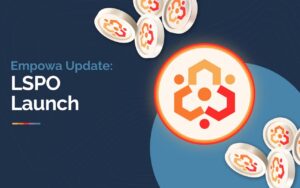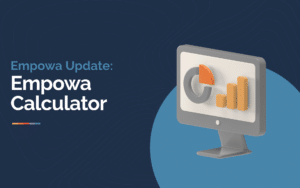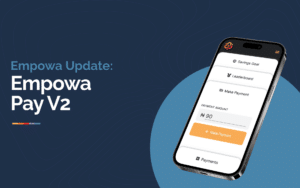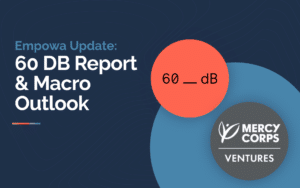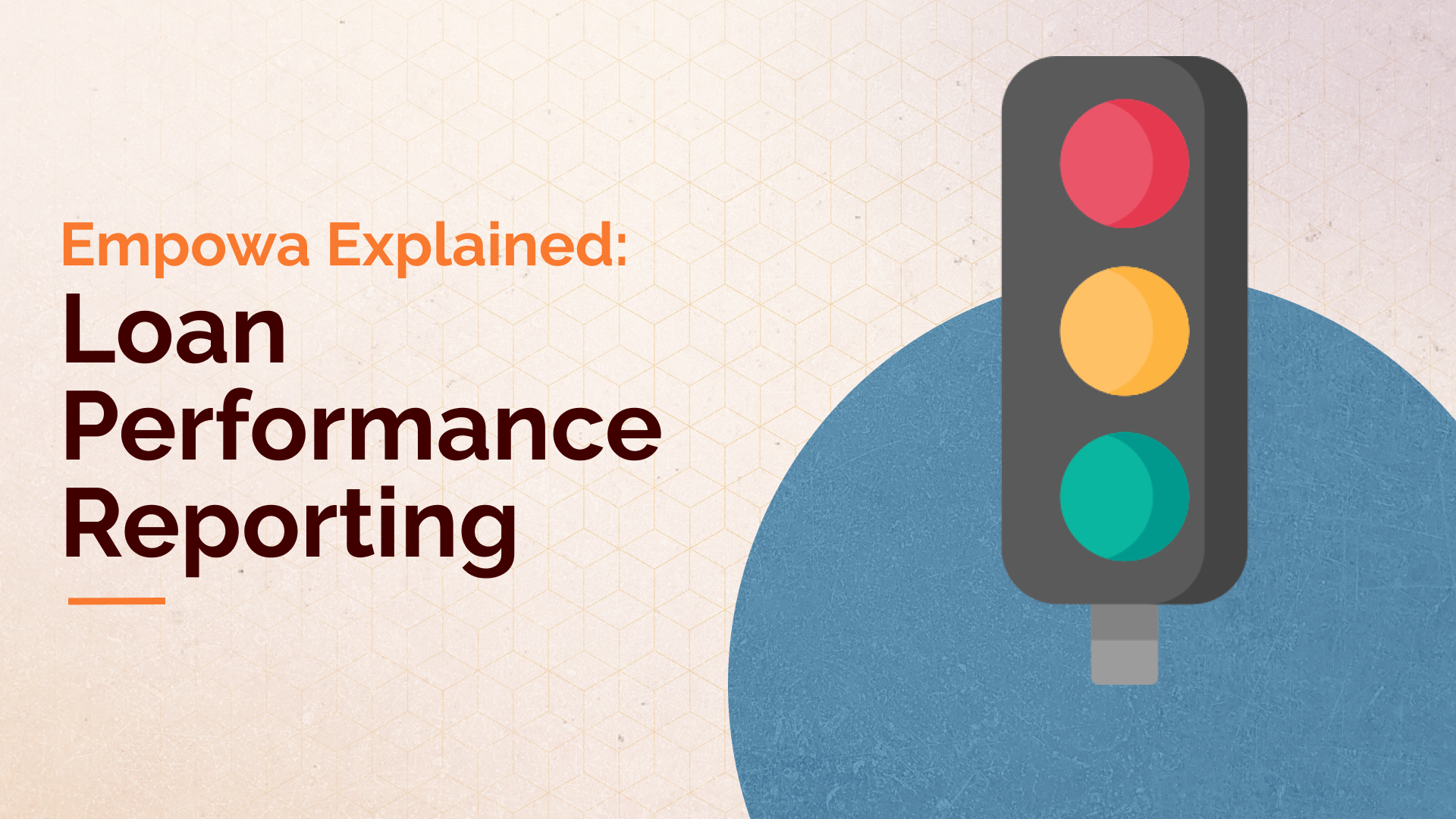
The first half of 2023 will see our project break ground on the 25 000 housing development in Beira Mozambique and launch a development with a new partner in our second African country. This level of on-the-ground growth highlights the need for a scalable solution to accurately manage the health of our loan book. With the launch of Empowa Pay, also set for the first half of 2023, we will leverage the power of the Cardano blockchain to support this at scale. But the blockchain can only provide accurate data. It is on us as a project to interpret said data and act accordingly.
Unlike traditional financiers who have to significantly increase their headcount to manage a growing loan book, a cost which is then passed on to the borrowers through higher interest rates, Empowa aims to leverage the power of the platform and Cardano’s smart contract capability to track loan health at the lowest costs possible.
The team has been carefully considering how to take the output of a smart contract and interpret it in a real-world situation. In response to this challenge, we have developed the Empowa traffic light system, which we will expand on below.
Who is actually responsible for the loan?
Before we expand on the Empowa traffic light it is important to recap who is in fact responsible for servicing the Empowa loan. In order to reduce cost, Empowa is seeking to minimise risk. This is achieved by funding families, across Africa, through a local service provider. In other words, Empowa provides funds to the local service provider for an affordable house, once there is a sales interest is formally agreed upon. This partner then provides rent-to-own finance to the tenants under conditions agreed with Empowa.
This approach de-risks the loan for Empowa as we do not take on the construction risk, have one partner to contract and yet multiple parties for repayment. The local partner has the on-the-ground relationships and resources to better manage the loan book and it means that Empowa is not responsible for the day-to-day management of tenants.
Since the loan is in fact issued to the local service partner, loan default only occurs if that partner is unable to service the debt to Empowa. In practice, this may mean that a single tenant could be in arrears, but the loan could be performing as expected. The following are examples of how this could be the case:
If you would like to better understand the difference between the rent and equity payment read our article here
- The developer has received enough rent and equity payments to cover the loan obligation even if one tenant is behind on their rent
- A tenant has missed their rent payment, but has equity saved up that the developer will use to cover their monthly rental payment
- A tenant has a plan to pay late on their rent agreement so on chain data shows a missed payment, while the on-the-ground reality the situation is under control.
- The developer is able to service the loan from other revenue while they manage the on-the-ground situation either
supporting a tenant to get back on track with their payments or by replacing the tenant. Partners may choose to do this to ensure they continue to qualify for Empowa funding.
There are naturally countless other scenarios, but ultimately default to Empowa is based on the local partner making payment.
So does that mean that you won’t track the tenant’s payments?
Data around the tenant’s rent and equity payment act as a critical data point in predicting how well the local partner will be able to service their debt. Since the monthly rent payment and ad hoc equity payments are ultimately used to repay the loan to Empowa, regular and on-time payments by tenants should translate to a healthy loan.
By capturing these payments on-chain using the Empowa Pay app we can get a real-time account of tenant payments and factor this into our loan health report.
So while we are primarily concerned with the payments from our service providers the tenant payments are of equal interest and will be captured and factored into our traffic light scoring system.
So what is this traffic light system?
The traffic light system is designed to score each loan issued with a green, orange or red light depending on how the loan is performing. The grade is given based on both on-chain data and on-the-ground feedback. Both the loan health score and accompanying notes will be made public through our Empowa explorer to all NFT holders so our community is kept up-to-date on how the project is performing.
In addition to this all payment data will ultimately be on-chain so should any community member want to validate the payment data being reported this can easily be done by looking at the on-chain records.
So what do the different colours actually mean?
As mentioned each loan will be scored green, orange or red. Below we have outlined broadly what the criteria are for each score. Note that the exact metrics will be refined over time as we collect more data on loan performance and are therefore better able to predict which indicators best determine how a loan will perform.
Green
A loan is marked as green when the local partner is up to date with their payments and the records of tenant payments fall within an acceptable range. This does not necessarily mean that all tenants are 100% up to date with their payments. It may be the case that a small portion of tenants are behind on their rent payments but this is compensated for by on-track equity payments, or there is a clear plan in place to manage the payment in arrears.
The exact threshold for both late rent payments and level of equity repayment will be shared with the launch of Empowa Pay so our community has a clear overview of what the acceptable levels are. The current level of both delayed rent payments and equity repayment will be made public.
Orange
A loan marked as orange is currently performing well, i.e. our local partner has made all their payments, but the data collected from the tenants has given us the reason for concern. This may be a higher-than-acceptable level of late payment on the rent or equity contributions sitting below the expected level at the current stage of the loan.
While we are still receiving our payments each month as agreed the tenant data is signalling this may not be sustainable. Rather than wait until a default we can step in early to try to rectify the situation in partnership with the service provider.
Factored into this score would also be softer metrics like the waiting list of tenants the developer has. As it stands to reason a development with a long waiting list can easily replace non-performing tenants with a new tenant quickly, while those without a waiting list may struggle to find someone to take over the rent-to-own contract.
Again notes on the loan will accompany the score for added context
Loans scored red have seen a missed payment by the local partner. Data collected around tenant payments will be used to help determine the exact cause of the late payment and a plan to get the developer back on track will be formulated.
It is worth noting that when this system is fully implemented with smart contracts and on-chain recording the accompanying notes will be important in understanding the full extent of the loan performance, after all, we are RealFi and so not all variables will be recorded on-chain. For example, should a cyclone hit Beira one could imagine that there will be some delay in receiving payments as tenants and even local partners struggle to get to the bank to facilitate their payments. While this would then result in a loan being downgraded based purely on the on-chain data the accompanying notes may highlight why a situation is not as dire.
The purpose of our traffic light system is to allow both the team and the broader community to at a glance gauge how our loans are performing based on the data recorded on-chain. As we scale to our target of 1 million African home loans by 2030 a methodology for clear reporting will be needed. The above will need to be refined as more data is collected and lessons are learnt, but we hope this approach is robust enough to scale while remaining simple enough to add value.


